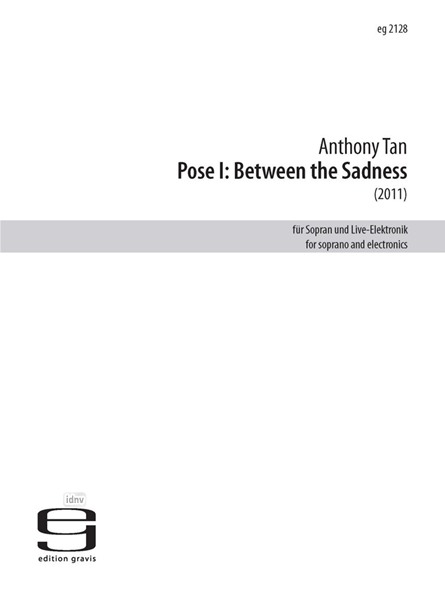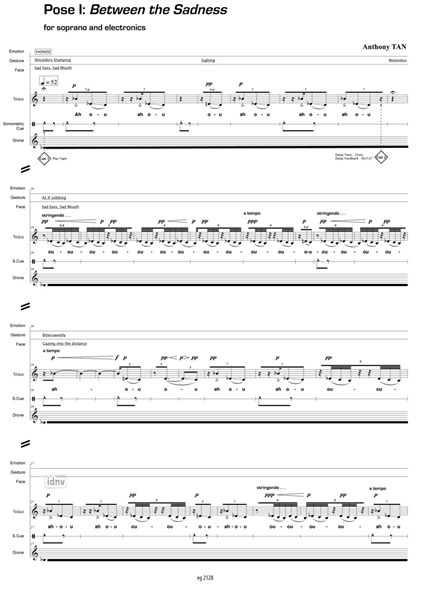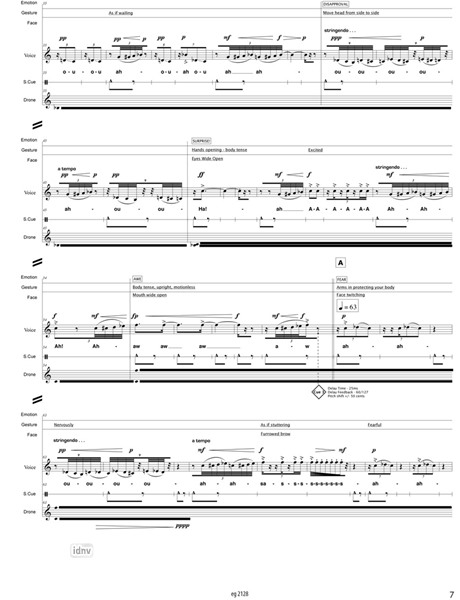Your basket is currently empty!
Pose I: Between the sadness für Frauenstimme und Live-Elektronik (2011)
Instrumentation: Female voice, Electronic Sounds
Female voice, Electronics
Score
Length (h:m:s): 00:08:00
Schwierigkeitsgrad: 4=Schwer
Stapled
Format: 21 x 29,7 cm
Pages: 16
Weight: 180 g
Edition Gravis / EG2128
ISMN: 9790205719838
incl. VAT
plus delivery costs
Female voice, Electronics
Score
Length (h:m:s): 00:08:00
Schwierigkeitsgrad: 4=Schwer
Stapled
Format: 21 x 29,7 cm
Pages: 16
Weight: 180 g
Edition Gravis / EG2128
ISMN: 9790205719838
incl. VAT plus delivery costs
22,00 €
Delivery time: 10 days
Program Notes
“When I wish to find out how wise, or how stupid, or how good, or how wicked is any one, or what are his thoughts at the moment, I fashion the expression of my face, as accurately possible, in accordance with the expression of his, and then wait to see what thoughts or sentiments arise in my mind or heart, as if to match or correspond with the expression.”
“The Purloined Letter”
– Edgar Allen Poe
This work is the first in a series of pieces for solo performer and electronics. Each “pose” takes a particular stance or opinion on a musical fopic. Pose I: Between the Sadness takes a position on music and emotion. I aimed to explore the expression of various states of emotion through the human voice. Further, I extend the emotional expression of the voice through the use of electronics by manipulation of voice timbre, both pre-recorded and live, guided by relationships between timbre and emotion.
In addition, research in psychoacoustics (Gabrielsson & Lindström, 2001), and musicology (Cooke, 1959), define relationships between emotional states and musical structure. Using this information, I attempted to ‘reverse engineer’ a musical work, portraying emotions through their relationship to musical elements of pitch, harmony, rhythm and timbre. The intention, however, was not to evoke specific emotions within the listener. Rather, I aimed to explore how these relationships may be used as a model within a contemporary musical language and aesthetic that is not specifically designed for functional use. Using Robert Plutchik’s “Wheel of Emotions” (1980) as the forming element of the work, music-affect relationships create a poetic representation of the different emotional stages of the model.
– Anthony Tan (2011)













